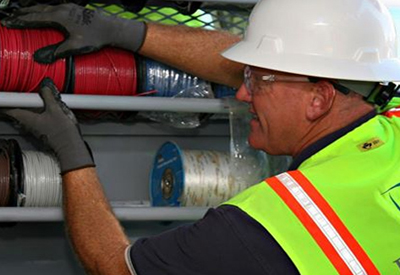The Beard and the Respiratory Protection Mask

Jan 15, 2021
Half-masks and full-facepiece respirators require an optimal seal to guarantee their effectiveness, and the beard can impede it considerably.
DID YOU KNOW THAT A BEARD’S REGROWTH AS LITTLE AS ONE DAY OLD CAN AFFECT THE MASK’S SEAL IN PLACE?
What does it mean exactly?
Since many masks have been tested on different face types, the results of these tests vary considerably. However, it should be noted that in 100% of cases, after 7 days without shaving, the respiratory protection masks showed a leak of more than 1%. This means that the air inside the mask contained more than 1% of unwanted particles!
Some masks can even let in up to 6% of toxic particles after only four days, with the growth of facial hair increasing the probability of leakage by more than 50% each day.
Also, it has been noted that jobs requiring regular head movement increase the probability that poorly shaved skin will create a leak.
To give an idea of the average frequency of shaving required, the beard should, for a worker on duty, have been shaved no more than 8 hours before the face shield is installed. This will ensure a facial surface with a minimum of irregularity to facilitate the tight and effective installation of the mask.
WHEN DOES IT BECOME DANGEROUS?
The critical thing to remember about your respiratory protection mask is that any breach, no matter how small, can lead to you becoming intoxicated while on duty.
Contaminants can enter your respiratory system in various forms, such as:
- Gas
- Vapors
- Particles
The level of toxicity also varies depending on the contaminant and the general health of the worker. For example, a person with asthma will have a more intense or even severe response to these respiratory exposures to toxic compounds.
TAKING PRECAUTIONS
Since it is not an exact science, it is crucial to do everything possible to limit exposure to volatile contaminants. Requiring a daily facial shave will promote an optimal seal and prevent leakage through the mask.
However, it is important to note that the beard is not the only hairy obstacle that can reduce the effectiveness of respiratory protection masks. In fact, a worker’s moustache, sideburns and especially hair can be an obstacle to the effectiveness of the equipment.
Be attentive to these obstructions and make sure that your workers meet respiratory protection standards.
SPI CAN HELP YOU IMPROVE THE USE OF RESPIRATORS IN THE WORKPLACE:
Choose the type of mask that suits your facial structure
Explore their range of high-performance respiratory protection masks quickly by clicking HERE
Learn more today about our respiratory fit testing offer
Go HERE to get information on our fit testing services in our branches or directly at your workplace.
This article was published with permision of, and was written by SPI










![Guide to the Canadian Electrical Code, Part 1[i], 26th Edition – A Road Map: Section 10 – Grounding and Bonding](https://electricalindustry.ca/wp-content/uploads/2022/11/Guide-CE-Code-2.png)





